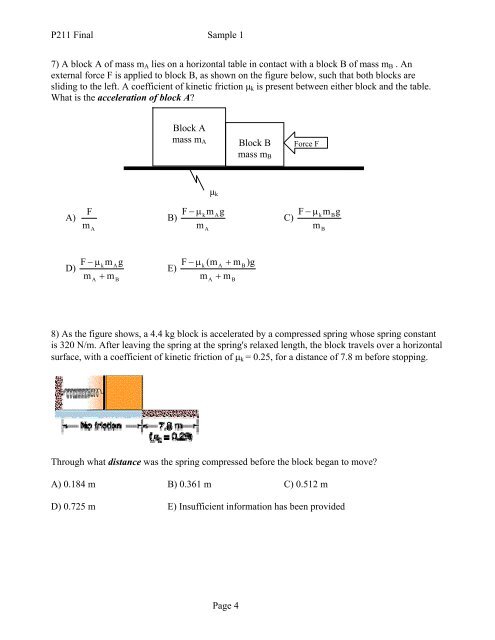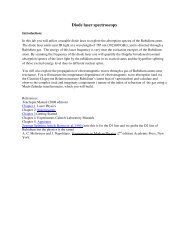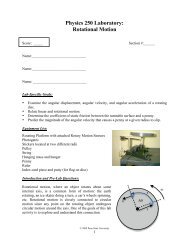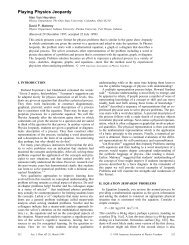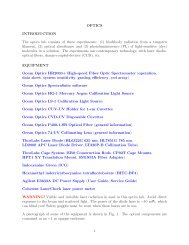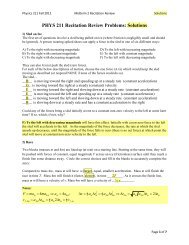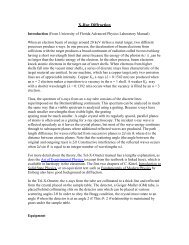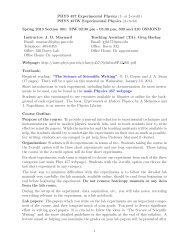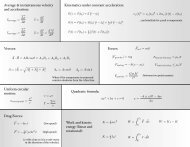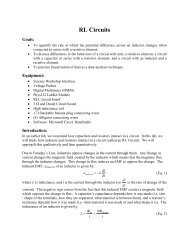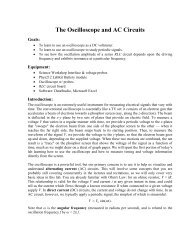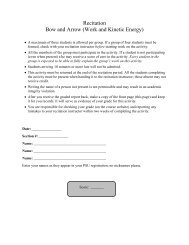0 5 10 15 20 25 30 0 2 4 6 Time (s) X (m) 8
0 5 10 15 20 25 30 0 2 4 6 Time (s) X (m) 8
0 5 10 15 20 25 30 0 2 4 6 Time (s) X (m) 8
You also want an ePaper? Increase the reach of your titles
YUMPU automatically turns print PDFs into web optimized ePapers that Google loves.
P211 Final Sample 1<br />
7) A block A of mass m A lies on a horizontal table in contact with a block B of mass m B . An<br />
external force F is applied to block B, as shown on the figure below, such that both blocks are<br />
sliding to the left. A coefficient of kinetic friction μ k is present between either block and the table.<br />
What is the acceleration of block A?<br />
Block A<br />
mass m A<br />
Block B<br />
mass m B<br />
Force F<br />
μ k<br />
A)<br />
F<br />
m A<br />
B)<br />
F − μ<br />
km<br />
m<br />
A<br />
A<br />
g<br />
C)<br />
F − μ<br />
km<br />
Bg<br />
m<br />
B<br />
D)<br />
F − μ<br />
km<br />
Ag<br />
m + m<br />
A<br />
B<br />
E)<br />
F − μ<br />
k<br />
(m<br />
A<br />
+ m<br />
m + m<br />
A<br />
B<br />
B<br />
)g<br />
8) As the figure shows, a 4.4 kg block is accelerated by a compressed spring whose spring constant<br />
is 3<strong>20</strong> N/m. After leaving the spring at the spring's relaxed length, the block travels over a horizontal<br />
surface, with a coefficient of kinetic friction of μ k = 0.<strong>25</strong>, for a distance of 7.8 m before stopping.<br />
Through what distance was the spring compressed before the block began to move?<br />
A) 0.184 m B) 0.361 m C) 0.512 m<br />
D) 0.7<strong>25</strong> m E) Insufficient information has been provided<br />
Page 4


